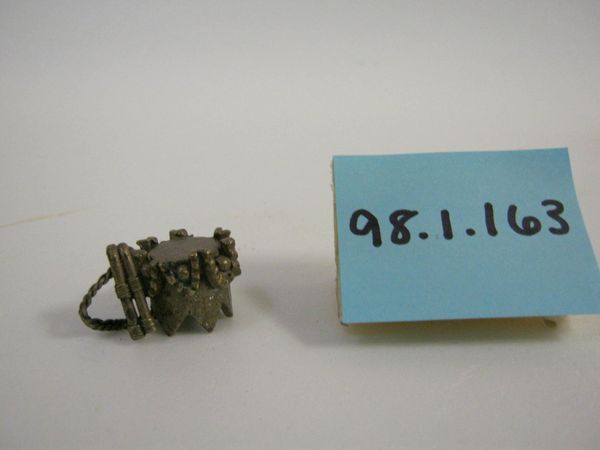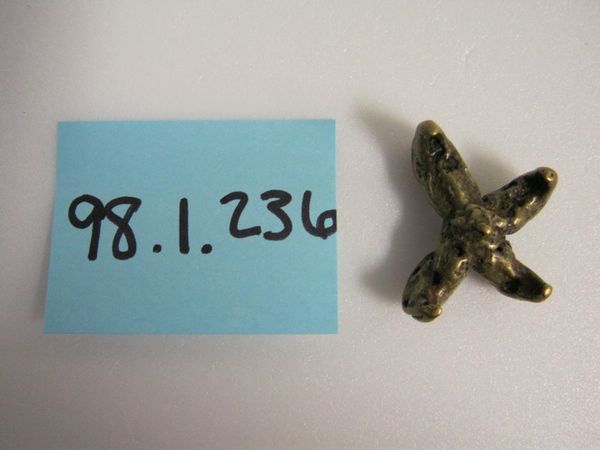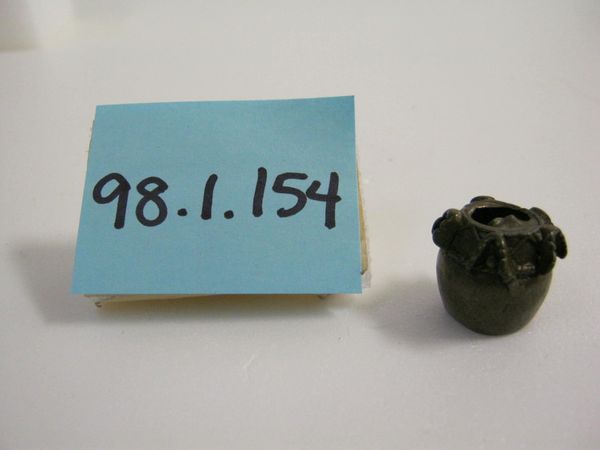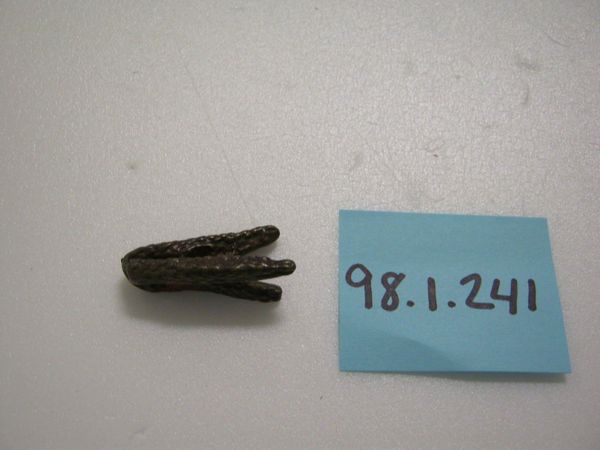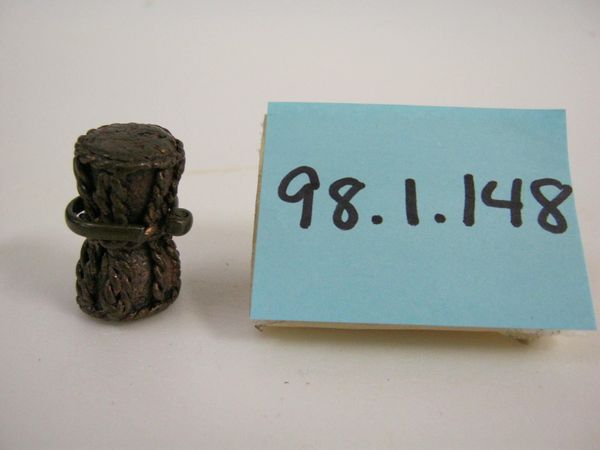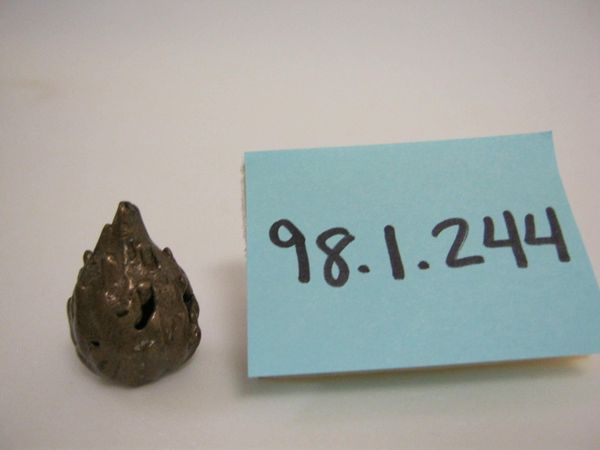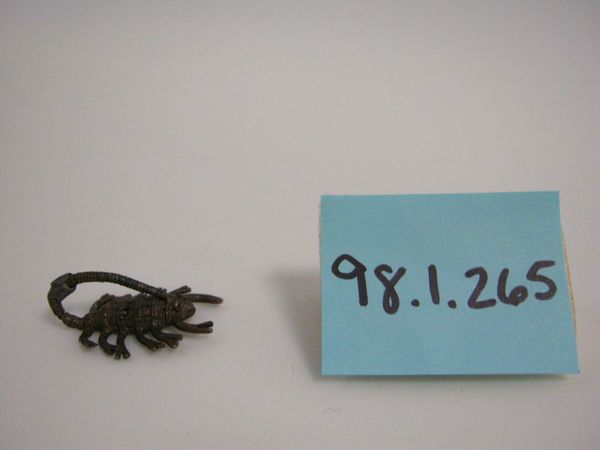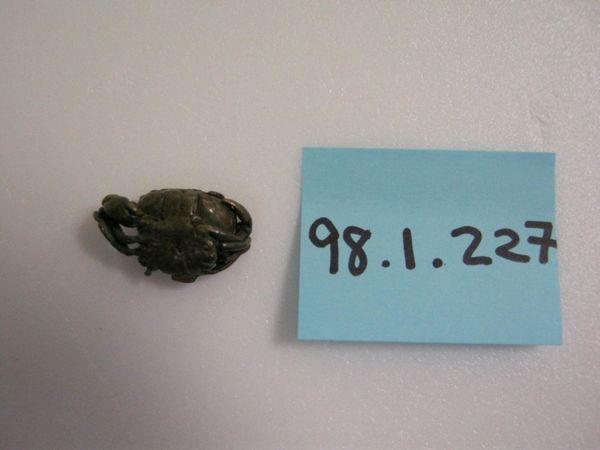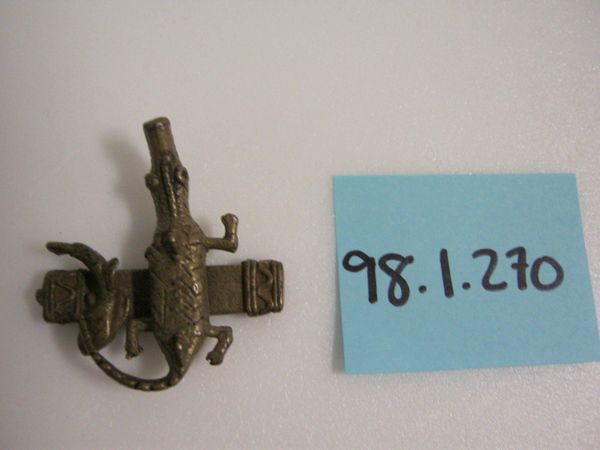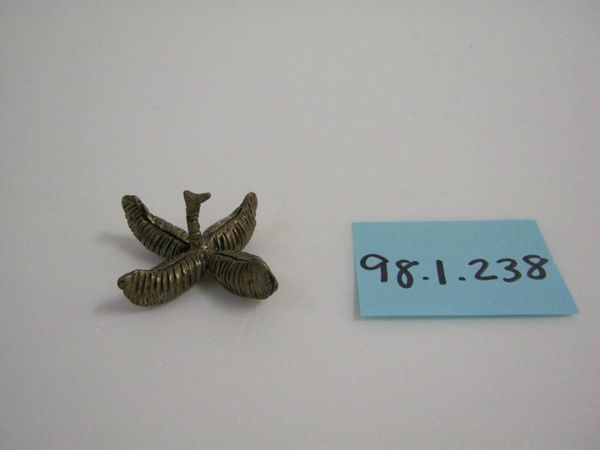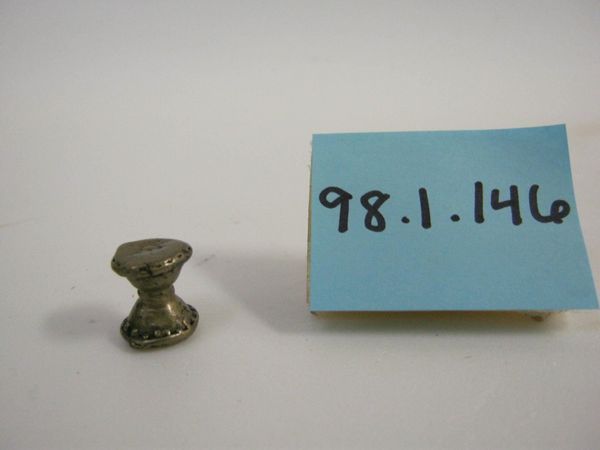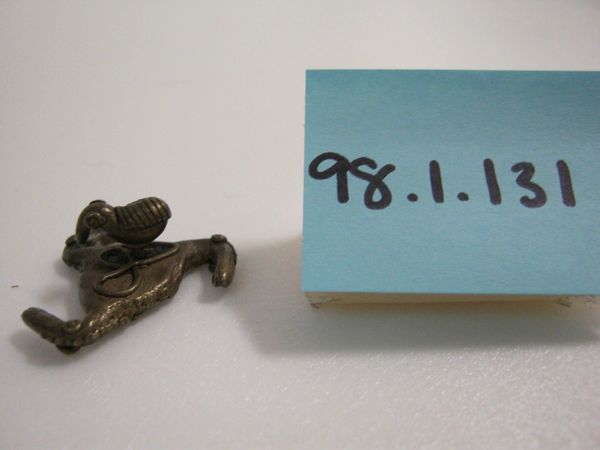![Goldweight [Bird's Head] by Akan](/_next/image?url=https%3A%2F%2Fd2w8kbdekdi1gv.cloudfront.net%2FeyJidWNrZXQiOiAiYXJ0ZXJhLWltYWdlcy1idWNrZXQiLCAia2V5IjogImFydHdvcmtzLzcwNzdjYzNmLWJlYTYtNDg1ZC05OWRhLTcwZGViMDI2ZWQ4Zi83MDc3Y2MzZi1iZWE2LTQ4NWQtOTlkYS03MGRlYjAyNmVkOGZfZnVsbC5qcGciLCAiZWRpdHMiOiB7InJlc2l6ZSI6IHsid2lkdGgiOiAxOTIwLCAiaGVpZ2h0IjogMTkyMCwgImZpdCI6ICJpbnNpZGUifX19&w=3840&q=75)
brass, sculpture
african-art
brass
sculpture
miniature
Dimensions: 9/16 x 13/16 x 3/8 in. (1.43 x 2.06 x 0.95 cm)
Copyright: Public Domain
Curator: What a curious little thing. Is this an artifact from ancient Mesopotamia? I’m intrigued. Editor: No, not quite, this striking piece hails from the Akan peoples, it’s a brass goldweight crafted sometime between the 19th and 20th centuries, and it’s here with us today from the Minneapolis Institute of Art. This particular example represents a bird's head. Curator: A bird’s head! Ah, I see it now. My first impression was that it was almost like an abstracted seed pod or maybe even a grotesque, but avian form—very miniature and surprisingly heavy-looking. The surface has a distinct patina as well. Editor: Goldweights such as this were integral to the Akan economic system. These miniature sculptures were used to measure quantities of gold dust. The diverse shapes weren't just decorative—they often carried proverbs or served as visual reminders of moral values, adding a layer of sociocultural richness. So a seemingly simple item gains incredible dimension! Curator: It makes you wonder, doesn't it? What social narratives is this avian form trying to communicate? How does it reinforce hierarchical structures, and what gendered roles come into play within that economic context? It's such a potent symbol within the framework of global trade, reflecting a complex history of wealth extraction and power. Editor: Absolutely, and if you let your mind wander just a bit—try to imagine, to really imagine that the person who cast it put their whole life into making it, not knowing it would eventually find a home in an art gallery for everyone to ponder. The weight, that cool weight. Someone felt its heft when buying their morning coffee, the perfect trade for this one object! And for me, at least, a bit of them lingers inside it. Curator: That tactile connection—the sense of presence, of individual experience intertwined with collective histories. That’s key here. Editor: Well said, I feel like it is also an embodiment of human intention; isn't it something special? Curator: A profound way to summarize our experience. These kinds of everyday objects allow a real understanding of art's cultural position and its economic significance across different historical moments. Editor: Cheers to that, let's check out the next marvel.
Comments
No comments
Be the first to comment and join the conversation on the ultimate creative platform.
